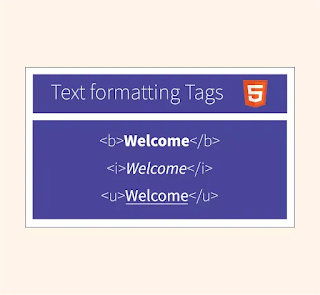In HTML, a paragraph is a block-level element used to group and display a block of text. The <p> tag is used to define a paragraph in HTML, and any text or other HTML elements enclosed within the <p> tag will be treated as a single block of text.
Paragraphs are commonly used to break up long sections of text into smaller, more manageable chunks. They can also be used to apply styling or formatting to a specific block of text within a larger document. For example, you can use CSS to set the font size, color, or alignment of a paragraph.
In addition, paragraphs can be used to provide context or descriptions for other HTML elements, such as images, videos, or code snippets. By using descriptive paragraphs, you can make your HTML documents more accessible and easier to understand for both human readers and search engine algorithms.HTML code for paragraphs
output
- Personal BioCreate a webpage that describes yourself. Use headings to separate different sections such as your name, education, work experience, hobbies, etc. Use paragraphs to provide more detailed information about each section.
- Favorite QuoteCreate a webpage that features your favorite quote. Use a heading to display the quote and the author. Use paragraphs to provide context for the quote and to explain why it's important to you.
- Book SummaryCreate a webpage that summarizes a book you recently read. Use headings to separate the different sections of the summary such as the title, author, plot, characters, themes, etc. Use paragraphs to provide more detailed information about each section.
- Technology TrendsCreate a webpage that discusses the latest technology trends. Use headings to separate different topics such as artificial intelligence, cloud computing, blockchain, etc. Use paragraphs to provide more detailed information about each topic and its importance in the tech industry.
- Health TipsCreate a webpage that provides tips for healthy living. Use headings to separate different topics such as diet, exercise, sleep, stress management, etc. Use paragraphs to provide more detailed information about each topic and its benefits for maintaining a healthy lifestyle.
Hey there readers,
I hope you found the HTML mini projects I shared with you helpful in practicing your HTML coding skills. These projects are designed to be simple yet effective in helping you understand how to use HTML tags such as headings, paragraphs, and pre-formatted text.
Now it's your turn to try these projects on your own and experiment with different HTML tags and styles. Don't be afraid to get creative and add your own personal touch to these projects. Remember, practice makes perfect, and the more you practice, the more comfortable you'll become with writing HTML code.
If you have any doubts about these HTML mini projects or any other related topics, I encourage you to review the previous posts on these topics. You can also try practicing similar projects on your own to gain a better understanding of how HTML works.
Remember, learning HTML can be challenging at first, but with practice and persistence, you'll soon become an expert.
And if you have any questions or comments about these projects, feel free to leave them in the comments section below. Also, don't forget to like, share, and follow for more content like this.
Happy coding!




No comments:
Post a Comment